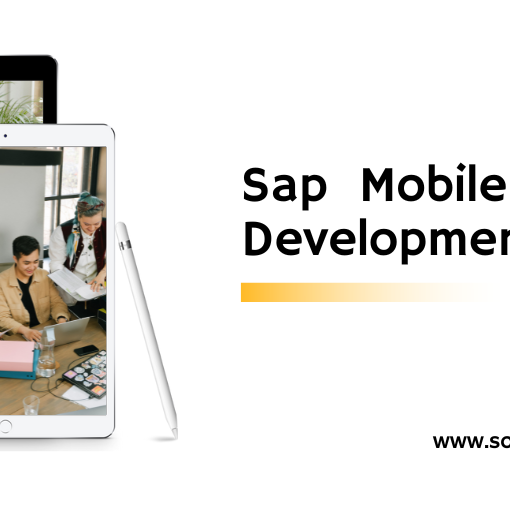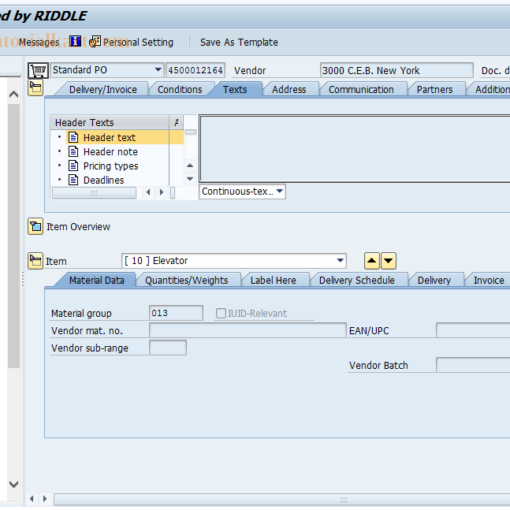Introduction: SAP Advanced Business Application Programming (ABAP) is a high-level programming language developed by SAP for customizing and developing applications within the SAP ecosystem. ABAP plays a crucial role in extending the functionality of SAP software and tailoring it to meet specific business requirements. In this blog, we will explore the essential concepts of SAP ABAP, providing a comprehensive guide for beginners to kickstart their journey into the world of ABAP development. (Basics of SAP ABAP is a powerful programming language that empowers developers to customize and extend SAP applications, adding)
Introduction to Basics of SAP ABAP:
SAP ABAP serves as the backbone of SAP applications, enabling developers to design custom programs, interfaces, and reports. ABAP is executed on SAP’s application server, making it a server-side programming language.
Data Dictionary in ABAP:
The ABAP Data Dictionary is a central repository that stores and manages metadata, defining the structure and relationships of data elements, tables, and views used in ABAP programs. Understanding the Data Dictionary is crucial for efficient data management in ABAP.
ABAP Development Tools:
SAP provides a range of development tools for ABAP programmers, including the ABAP Workbench, SAP GUI, and SAP NetWeaver Developer Studio. Familiarizing yourself with these tools will enhance your efficiency in ABAP development.
ABAP Data Types and Variables:
In ABAP, variables hold values during program execution. Understanding data types such as integers, characters, and strings, and how to declare and use variables, is fundamental to writing ABAP code.
ABAP Operators and Expressions:
ABAP supports a variety of arithmetic, comparison, and logical operators to manipulate data and make decisions in programs. Learning how to use these operators and build expressions is essential for writing effective ABAP code.
Control Structures in ABAP:
Control structures like IF-ELSE, CASE, and LOOP statements allow developers to implement decision-making and looping functionalities in their programs, enabling the automation of repetitive tasks.
ABAP Internal Tables:
Internal tables are crucial for storing and processing data within ABAP programs. Understanding how to create, populate, and manipulate internal tables is vital for handling large datasets.
ABAP Modularization Techniques:
Modularization techniques like function modules and subroutines enhance code reusability and maintainability. Mastering these techniques will allow you to create modular and scalable ABAP programs.
User Interface (UI) Programming in ABAP:
SAP ABAP developers often work on creating user interfaces for SAP applications. Learning about ABAP UI elements, such as screen elements, subscreens, and GUI status, is essential for building user-friendly applications.
ABAP Object-Oriented Programming (OOP):
ABAP supports object-oriented programming, enabling developers to design classes, methods, and objects. Understanding OOP concepts like encapsulation, inheritance, and polymorphism extends the capabilities of ABAP programming.
Debugging and Error Handling in ABAP:
Effective debugging skills are essential for identifying and resolving issues in ABAP programs. Learning how to set breakpoints, analyze variables, and handle errors will significantly enhance your productivity as an ABAP developer.
SAP Enhancements and Modifications:
ABAP developers often need to customize SAP standard functionality to suit business requirements. Learning how to use user exits, BAdIs (Business Add-Ins), and enhancement points will help you make seamless modifications to SAP applications.
Conclusion:
Basics of SAP ABAP is a powerful programming language that empowers developers to customize and extend SAP applications, adding value to businesses across the globe. This comprehensive guide has introduced you to the fundamental concepts of ABAP, from data types and control structures to OOP and user interface programming. As you dive deeper into ABAP development, remember to practice and apply your knowledge in real-world scenarios to become a proficient ABAP programmer. Embrace the endless possibilities that SAP ABAP offers, and embark on an exciting journey of innovation and problem-solving in the SAP ecosystem.




